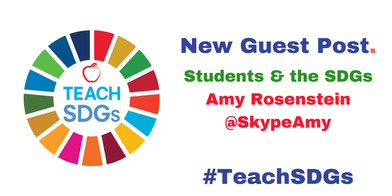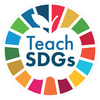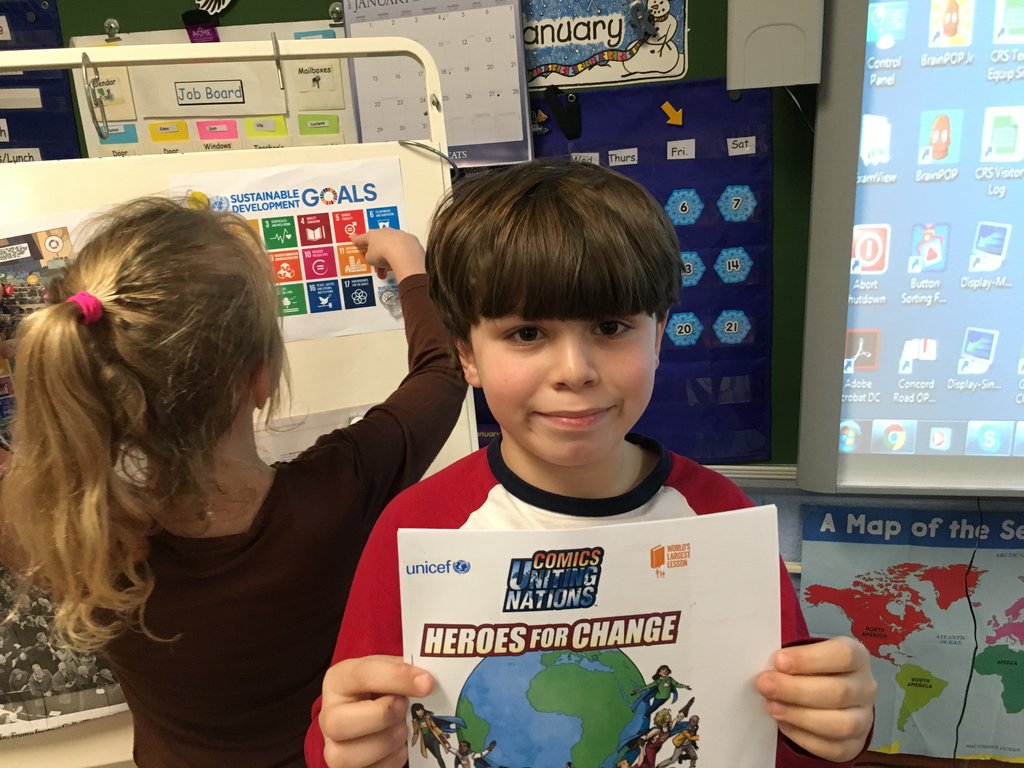 By Amy Rosenstein, @SkypeAmy Global Goals Educator Task Force Executive Team Member Becoming part of the SDG Project is an honor, and really a mission for me. Having taught elementary school for my entire teaching career, it turns out that I’ve already been focused on many of the United Nation’s Sustainable Development Goals. I just hadn’t labeled them as such. Let’s take a step back, and I’ll explain. Eight years ago, a family from my school community in New York left to move to Hong Kong. The mom and I got together for a goodbye lunch and we talked about using Skype to keep in touch with each other. I had never used this technology before, but it seemed to be worth a try. Suddenly, an idea! Our third grade curriculum had just changed to a focus on China. How about if we arranged a Skype call from Hong Kong to New York with my students? I found an old webcam, taped it to a box, connected it to my computer and SMARTBoard, and like magic, we were connected. My students were instantly mesmerized and I realized that I was onto something big. Students were fascinated that they could speak to people across the world, live, face-to-face. They could ask any questions that came to mind. Since this first Skype call in my classroom in the fall of 2009, my students over the years have met other students, teachers, and experts in over forty countries including Kenya, South Korea, Russia, and even the continent of Antarctica! From these experiences, they’ve learned acceptance, tolerance, speaking and listening, questioning, and basic humanity, really. They’ve come to understand that we’re more alike than we are different and that we all have a responsibility to each other. Skype has allowed us to build bridges throughout the world. Projects
Some of our calls grew into larger projects. One in particular involved meeting children in Uganda. My third graders shared artwork with them, and both groups sang songs together. We took a tour of the compound in which they lived, and we asked and answered questions of each other. We then teamed up with our high school Amnesty International Club, and along with six other third grade classes, we conducted a read-a-thon in which students read internationally themed picture books with parents, administrators, and other students, for 100 minutes straight. The experience had a much greater impact because the children helping each other had actually met each other. They weren’t concepts, or theoretical groups of people in faraway lands. They were real people with whom we now had connections. This project naturally lends itself to SDG Goal 4: Quality Education. My students have met with a researcher in Antarctica and they’ve learned about global warming and climate change. They’ve interacted directly with a researcher, out on the ice with Adélie penguins. They then created posters and did a presentation to a kindergarten class about what they could do to help the environment. This fits right in to SDG Goal 13: Climate Action. These are only two projects of the tens of thousands that are taking place throughout the world. I see the Global Goals for Sustainable Development as the glue which holds all of these projects together. If teachers and students label them as such, the adults of tomorrow, the students in front of us today, will be aware of the goals. Simple as that. Connecting Classrooms Sharing projects with others around the world really motivates students. Once they have a real audience to whom they are responsible, they tend to feel more accountable. My students recently created digital posters about the SDGs and we’re in the process of sharing them with other classes via Skype. In order for students around the world to connect to each other around the SDGs, teachers may find connections through a Skype project that I’ve created. Click here for the link to this Skype Collaboration. Classes may share work they’ve already created, or may collaborate on a larger project over Skype. Being part of TeachSDGs is something I treasure, and I’m looking forward to seeing what’s next. Learn more about Amy and her work with #TeachSDGS on Twitter and on her professional blog. |
AuthorSTeachSDGs Team & Contributors Archives
November 2019
Categories |




 RSS Feed
RSS Feed